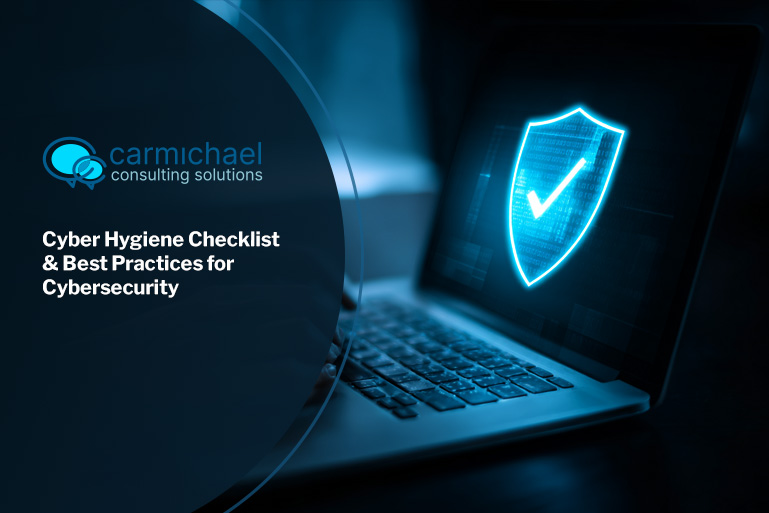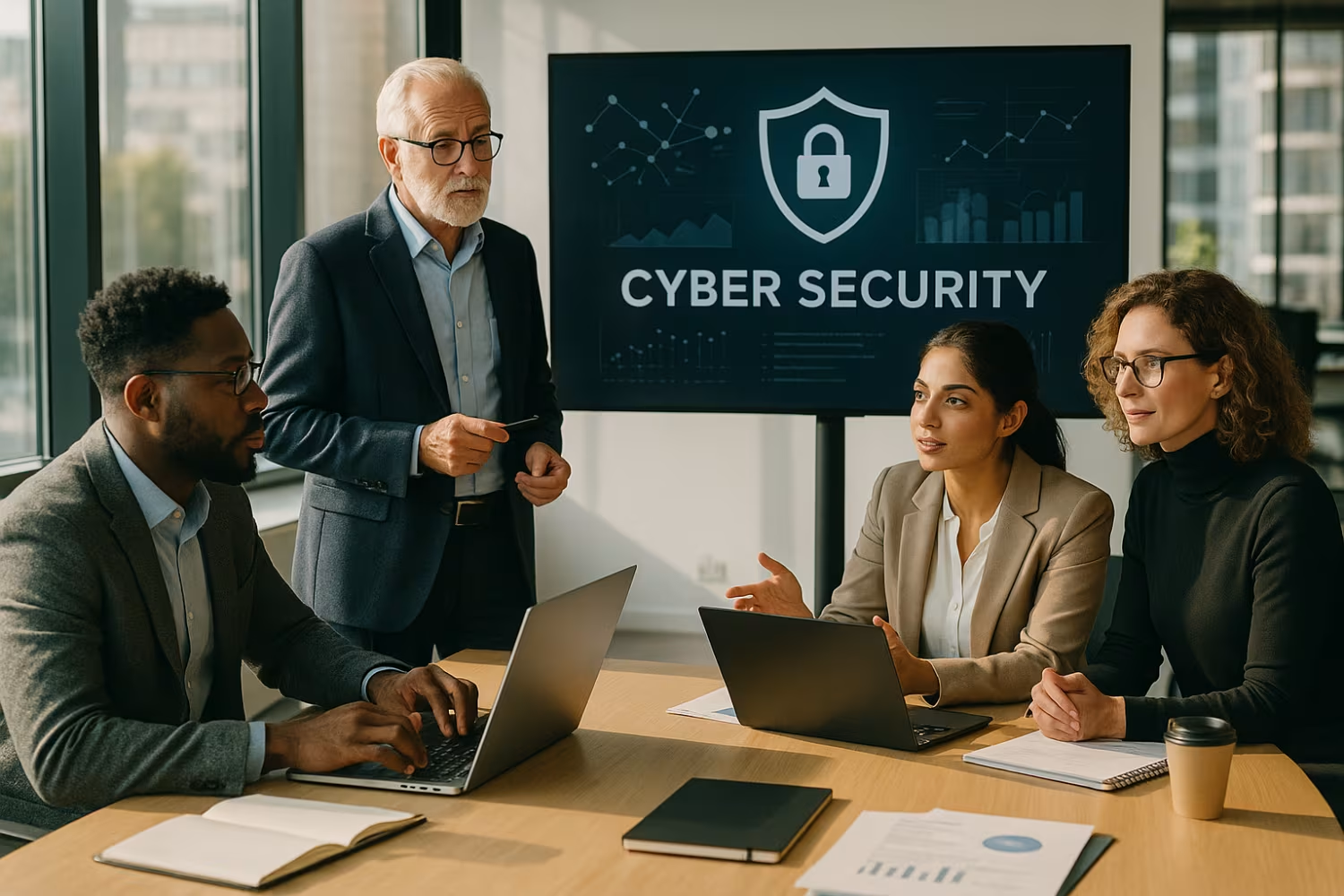
Maintaining strong cyber hygiene is no longer optional for businesses—it’s a requirement. With cyber threats growing more sophisticated, companies must take proactive steps to protect sensitive data, avoid breaches, and reduce risk. In this blog, you’ll learn what cyber hygiene is, why it matters, and how to apply cyber hygiene best practices. We’ll also cover tools, checklists, and services that support good cyber hygiene, especially for growing businesses.
You’ll also discover how hygiene practices like using multi-factor authentication, regular vulnerability scans, and cybersecurity awareness training can help reduce the risk of data loss and social engineering attacks.
[.c-button-wrap2][.c-button-main2][.c-button-icon-content2]Contact Us[.c-button-icon2][.c-button-icon2][.c-button-icon-content2][.c-button-main2][.c-button-wrap2]
Cyber hygiene refers to the routine practices and steps businesses take to maintain the health and security of their IT systems. Just like personal hygiene helps prevent illness, cyber hygiene helps prevent cyber threats like malware infections, phishing attacks, and data breaches.
At its core, cyber hygiene includes tasks like updating software, using strong passwords, and limiting access to sensitive data. These actions help reduce vulnerabilities that attackers often exploit. For small to mid-sized businesses, building a solid cybersecurity foundation through basic cyber hygiene is one of the best defenses against common threats.
Cybersecurity hygiene also involves educating employees, monitoring systems, and using tools that detect and respond to threats. When done consistently, these practices help protect your business from costly downtime and data loss.

To build a strong cybersecurity foundation, follow these essential cyber hygiene best practices. Each one plays a key role in protecting your systems and data.
Weak passwords are one of the most common entry points for attackers. Use a strong password for each account and avoid reusing them. Consider using a password manager to keep track of credentials securely.
MFA adds an extra layer of protection by requiring users to verify their identity using more than just a password. It’s a simple but powerful way to block unauthorized access.
Outdated software often contains vulnerabilities that hackers can exploit. Regularly update your operating systems, applications, and firmware to close security gaps.
Scanning your network and devices helps identify weaknesses before attackers do. Schedule regular scans and address any issues found immediately.
Not every employee needs access to all company data. Use role-based access controls to limit exposure and reduce the risk of internal breaches.
Human error is a major cause of breaches. Teach staff how to recognize phishing emails, avoid suspicious links, and report unusual activity.
Data loss can happen due to ransomware, hardware failure, or human error. Regular backups ensure you can recover quickly without paying a ransom or losing critical information.
Practicing good cyber hygiene offers several important advantages:

A cyber hygiene checklist helps ensure that your team consistently follows essential security practices. It acts as a guide for routine tasks like updating software, reviewing access controls, and checking backups.
Using a checklist also makes it easier to track progress and identify gaps in your cybersecurity hygiene. Whether you manage IT in-house or use cyber hygiene services, having a checklist keeps your efforts organized and effective.
Maintaining cyber hygiene requires the right mix of tools, policies, and habits. Here are some strategies to help you stay on track.
Install antivirus and anti-malware tools on all devices. These tools help detect and block threats before they cause damage.
Use firewalls and intrusion detection systems to monitor traffic and flag suspicious activity. This helps you catch issues early.
Change default router passwords and use strong encryption (like WPA3). Limit access to your network with guest Wi-Fi for visitors.
Encryption protects data by making it unreadable without the proper key. Use it for files, emails, and backups containing sensitive information.
Check who is accessing your systems and when. Unusual patterns may indicate a breach or misuse of credentials.
When vendors release patches, apply them right away. Delays can leave your systems exposed to known exploits.
If you don’t have in-house expertise, consider working with cybersecurity professionals. They can help assess risks and implement best practices.

Start by assessing your current cybersecurity practices. Identify what’s working and where there are gaps. Then, create a plan that includes regular updates, employee training, and a cyber hygiene checklist.
Assign responsibility for key tasks like patching, backups, and monitoring. Make sure everyone understands their role in protecting company data. Even small changes—like requiring MFA or updating your router settings—can make a big difference.
If managing all of this in-house feels overwhelming, consider partnering with a provider that offers cyber hygiene services. They can help you stay secure without stretching your internal resources.
To keep your systems protected over time, follow these best practices:
Staying consistent with these steps helps your business stay secure, even as threats evolve.

Are you a business with 10 to 350 employees looking to improve your cybersecurity? If you’re growing and need help managing IT risks, we can help you build a strong foundation with proven cyber hygiene strategies.
At Carmichael Consulting Solutions, we understand how important it is to protect your systems and data. Our team offers cyber hygiene services that include vulnerability scans, employee training, and managed security tools. Let’s work together to keep your business secure.
[.c-button-wrap2][.c-button-main2][.c-button-icon-content2]Contact Us[.c-button-icon2][.c-button-icon2][.c-button-icon-content2][.c-button-main2][.c-button-wrap2]
Cyber hygiene refers to the regular practices that help keep your IT systems secure. These include updating software, using strong passwords, and limiting access to sensitive data. These steps reduce the risk of cyber threats and help prevent data loss.
Understanding what cyber hygiene is helps your team stay alert to risks like phishing, social engineering, and malware. It also supports compliance with regulations and builds trust with customers.
Your hygiene checklist should be reviewed at least once a month. This ensures that your cybersecurity practices stay current with evolving threats and technologies.
Regular updates help you catch overlooked vulnerabilities, like outdated software or weak authentication methods. A current checklist also supports better coordination between IT and other departments.
Good cyber hygiene helps small businesses avoid costly breaches and downtime. It also protects sensitive data and supports business continuity.
By following cybersecurity hygiene practices, you reduce the risk of ransomware, data loss, and unauthorized access. These benefits make it easier to grow your business with confidence.
Yes, antivirus software is just one part of a complete cybersecurity plan. Cyber hygiene services include broader support like vulnerability scans, employee training, and policy development.
These services help you build a layered defense that addresses both technical and human risks. They also ensure your systems follow cybersecurity best practices.
The best defense is consistency. Follow a clear hygiene checklist, train employees regularly, and monitor your systems for unusual activity.
Avoiding common cyber hygiene mistakes—like skipping updates or using weak passwords—requires ongoing attention. Working with security experts can also help you stay ahead of threats.
Start with basic cyber hygiene practices like enabling multi-factor authentication and updating software. These steps offer strong protection with minimal effort.
If your team is stretched thin, consider outsourcing to a provider that offers cyber hygiene services. They can handle routine tasks and help you stay secure without overloading your staff.
